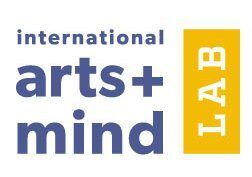IAM Lab is part of the Pedersen Brain Science Institute at Johns Hopkins University School of Medicine. It brings together brain scientists and practitioners in architecture, music and art in a global effort to amplify human potential. It is building the field of neuroaesthetics, an emerging field of study that explores the impact of the arts, architecture and music on the human brain and behavior.
The psychology of aesthetics involves the “study of our interactions with artworks; our reactions to paintings, literature, poetry, music, movies, and performances; our experiences of beauty and ugliness, our preferences and dislikes; and our everyday perceptions of things in our world—of natural and built environments, design objects, consumer products, and of course, people.”
“When we use the term ‘the arts and aesthetic experiences,’ we acknowledge the full spectrum of sensory, perceptual, or expressive experiences, including Visual Arts, Literary Arts, Performing Arts, Music, Dance & Movement, Media Arts, Traditional Handcrafts, Architecture & Design, Natural Environments, and Cultural Experiences.”
Neuroarts
Neuroarts is a complementary term developed as part of The NeuroArts Blueprint, a groundbreaking initiative led by the IAM Lab and the Aspen Institute’s Health, Medicine and Society Program. Neuroarts is a simpler, more direct way to discuss with diverse audiences how the arts and aesthetic experiences measurably change the brain and body.
Neuroarts is the transdisciplinary study of how the arts and aesthetic experiences measurably change the body, brain, and behavior and how this knowledge is translated into specific practices that advance health and wellbeing.
“Scientific studies increasingly confirm what human beings across cultures and throughout time have long recognized: we are wired for art. The arts in all of their modalities can improve our physical and mental health, amplify our ability to prevent, manage, or recover from disease challenges, enhance brain development in children, build more equitable communities, and foster well-being through multiple biological systems.”
“Research shows the arts and our environment have the power to shape our biology. We now know that music lowers blood pressure, pain, and anxiety and improves mood, memory, learning, and focus. Aesthetic experiences like spending time in nature have similar restorative effects, reducing stress levels, boosting mood and relieving anxiety. Beholding art also increases self-reflection, and studies indicate that theater experiences foster perspective-taking and empathy.”
“Because the brain is agile, exposure to arts of all kinds fosters interconnectivity across a vast and complex network populated by hundreds of billions of neurons, influencing how we process and perceive creative experiences. The brain systems that engage with reward, motor activity, perception, and the senses are stimulated by art in ways unmatched by anything else.”
The Evidence for Arts as Medicine
Science reveals that art can work hand in hand with traditional medicine to improve mobility, memory, and speech; relieve pain and the after-effects of trauma; enhance mental health and learning outcomes; build resilience; and prevent disease. Arts interventions can lower the burden and cost of chronic and degenerative diseases, mental health challenges, addiction, and trauma.
The World Health Organization “finds evidence of the contribution of the arts to the promotion of good health and the prevention of a range of mental and physical health conditions, as well as the treatment or management of acute and chronic conditions arising across the life-course.”
“There is much more to learn so that we can develop and build on the science with rigor, including the best ways to deliver art, the optimal dose and duration of the therapy, and how to tailor it to individual experiences, opportunities, and challenges. The field is at an inflection point, offering the hope of tackling some of society’s most intractable problems. Whether through dance, song, writing, or painting, approached either as maker or beholder, health and well-being is enhanced by expressions of self, experience, imagination, and creativity. Neuroarts helps us harness and mobilize these powerful biological forces and realize the promise of art.”
excerpted from:
https://www.artsandmindlab.org/

